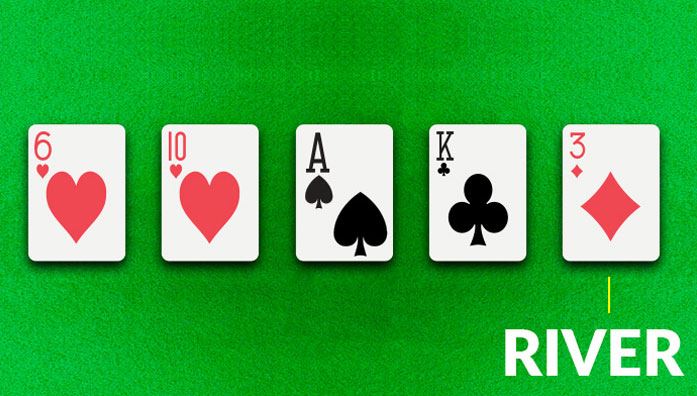The River is the last opportunity to win your opponent’s hand. It is important to bet with the strongest hand possible and calculate pot odds. It is also important to think in ranges and consider your opponents’ previous play. It’s often difficult to decide whether to bet again on the river. Betting again might lose more money against a better hand, but failing to bet could show weakness and allow your opponent to take control.
Betting Intervals
Failing to bet on the river is one of the biggest mistakes that players can make. It is not only costly from a strategic standpoint but can also turn a good player into a break-even player or even a loser over the long run. Depending on your opponent, you should consider whether to value bet the river with a weak hand or not. Loose-passive players tend to call large river bets with all kinds of hands, while tight-aggressives may be less likely to do so.
The final community card, the river, is dealt after betting has ended on the flop and the turn. Once again, betting starts with the player to the left of the button and continues in a clockwise direction. As a result, the river is the simplest street to bet, since future board coverage is no longer an issue. Bets can be straightforwardly classified as either value, seeking calls from worse hands, or bluffs, seeking folds from better ones.
Limits
The River is a crucial stage in limit poker and one of the biggest mistakes that players can make is not calling a bet with their strongest hand. To minimize these mistakes, it’s important to understand how to play this final street. Specifically, players must know the correct boundary for value betting and how to induce weaker hands to call bluffs.
When playing the river, it’s important to take into account how many opponents are facing you. For example, if the BU calls your turn bet and you have unimproved overcards, you can bet for value because it’s unlikely that he has a strong made hand that will fold to a bet.
On the other hand, if your opponent is passive and has only called your flop and turn bets, you may want to check instead. However, remember that limit is a game of draws, and if you don’t bet for value, your opponent will likely call your check with garbage.
Betting Options
When playing ریور پوکر, a player’s position can make a big difference in the decisions they have to make. While a player’s position can determine opening hands and initial bet sizes, it also affects moves on later streets, such as the turn and the river. A player’s position on the river can allow them to gather more information about their opponents’ responses and calculate pot odds.
The amount of players in the hand can also influence value betting. For example, if you are in late position with a premium hand and your opponent is in early position, you can probably assume that they will call any bet, so a bet doesn’t have much value. However, if you have a premium hand and only one opponent, you can usually bet to induce bluffs. The bluff will work approx. 18% of the time, which is still a good return on investment. However, you must remember that your opponent can also bluff with a weaker hand and the bet may not succeed.
Bluffing
Making good bluffs on the river (and avoiding bad ones) is one of the biggest keys to winning at micro stakes poker. It runs counter to a lot of the GTO talk these days, but it’s very profitable and not that complicated. Firstly, make sure you’re only bluffing against players who will actually fold on the river. This can be determined by their WTSD% and their preflop tendencies. Fishy players will generally be the type you want to avoid bluffing against, while tight regs will often be more susceptible to your bluffs.
Choosing the right bet size for your bluffs is also important. Ideally, you’ll bet with the same amount as you would when playing strong value hands. This will help your opponents recognize your bluffs and make them easier to exploit. If you’re in late position, this can be even more effective than early position because your opponent will have a harder time calculating pot odds for calls.
Wrapping It Up
The river is the last betting phase of a poker hand and provides key information that can influence decisions. Consider your opponent’s likely holdings, board texture and previous street actions when deciding how to play. Value bet the river when you have the best made hand and the board completes potential straights or flushes. This will make weaker made hands call.
